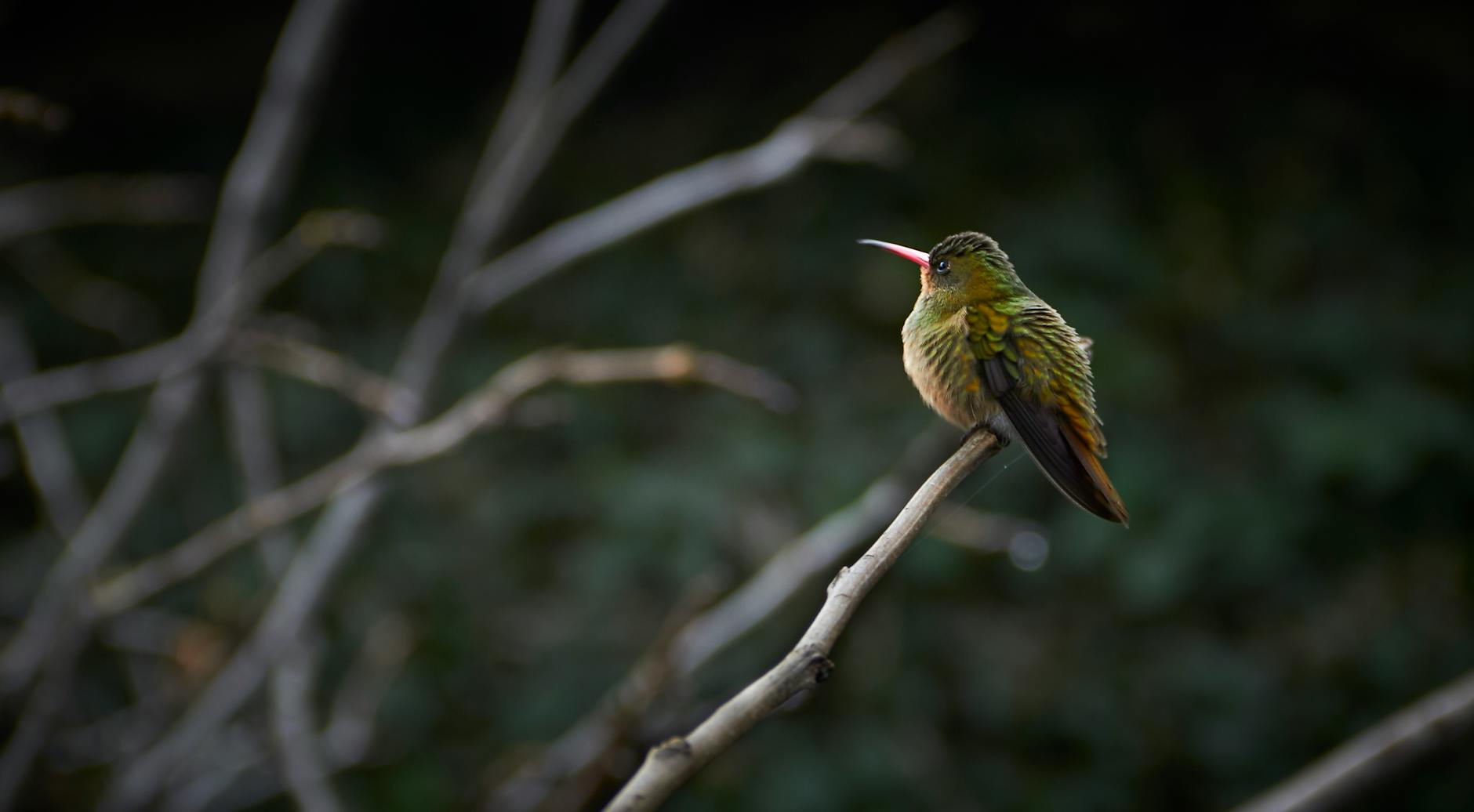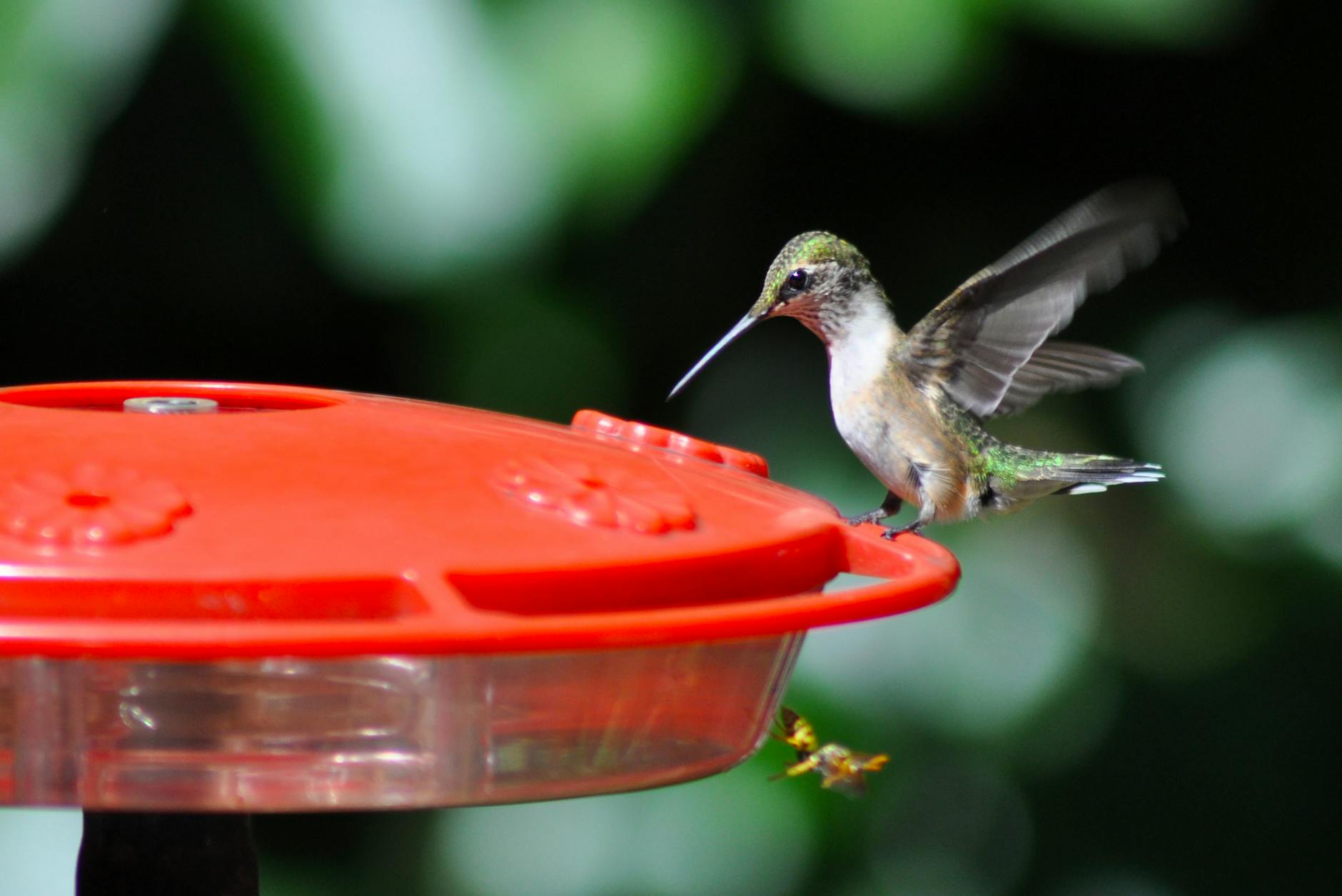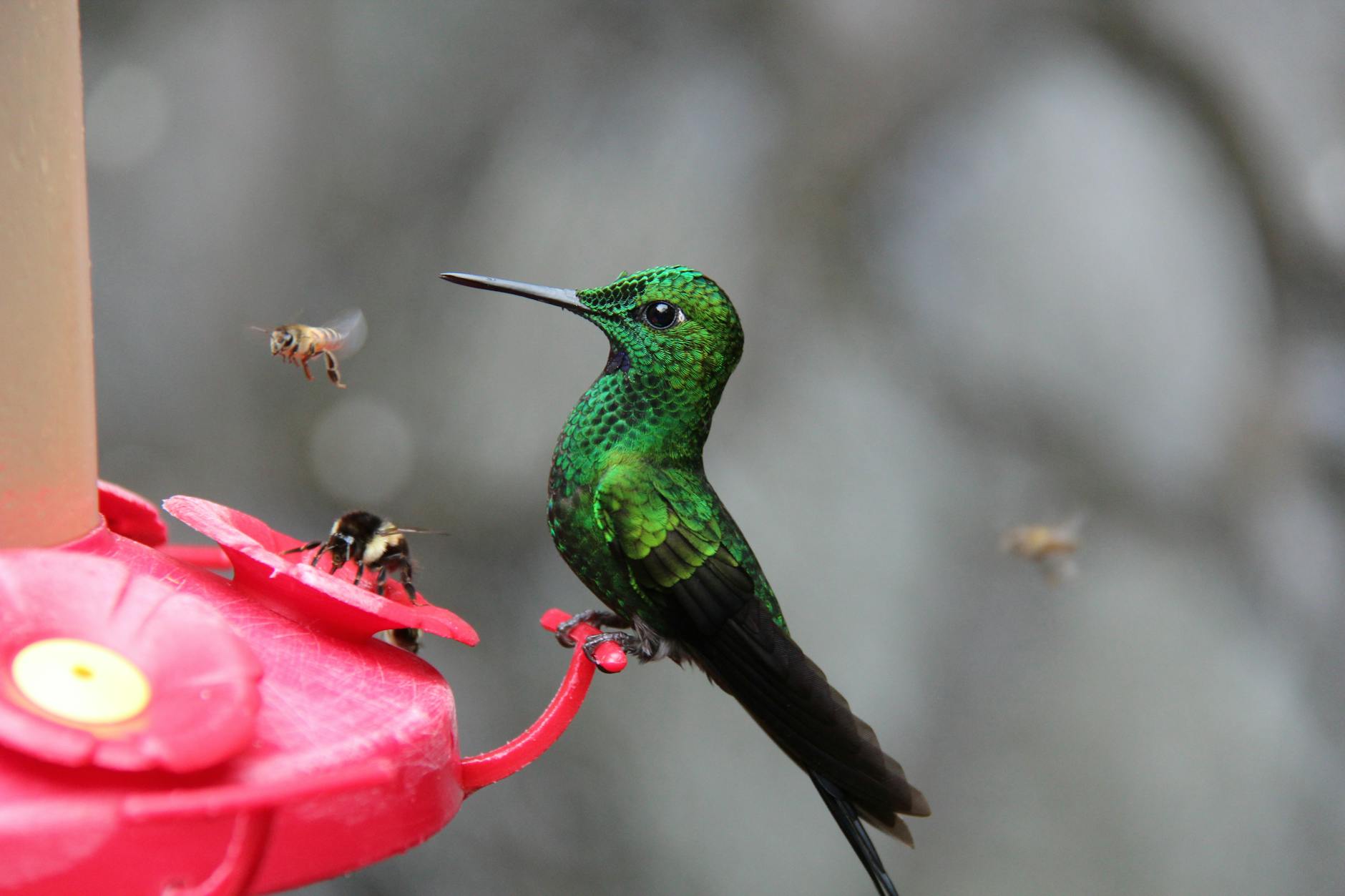
Do Hummingbird Beaks Open? Everything You Need to Know
Hummingbirds are some of nature’s most mesmerising creatures, but their tiny beaks hold a surprising secret. Yes, their beaks do open, allowing them to feed on nectar and even catch small insects. Their unique design is perfectly suited for their energetic way of life, and there’s more to uncover about how these remarkable beaks work.
Understanding Hummingbird Beak Anatomy
Hummingbirds are known for their swift movements and jewel-like appearances, but their beaks are just as fascinating. Designed for precision, these beaks are an essential tool for survival. Let’s explore how their shapes and functions vary among species.
Shape and Size Variations
Hummingbirds boast a remarkable variety in beak shape and size, and these differences are no accident. Each species has a beak specifically adapted to its preferred food sources. From the slightly curved beaks of the Sword-billed Hummingbird to the shorter, straight forms seen in other species, every variation tells a story of evolution and survival.
Some hummingbirds prefer long, slender beaks to access the nectar hidden deep within tubular flowers. Others display sturdier designs made for catching insects, a critical protein source. These adaptations ensure they have the tools needed for their environment. Imagine trying to drink a thick milkshake through a narrow straw – that’s the level of specialisation a hummingbird’s beak provides.
How Hummingbird Beaks Function
Hummingbird beaks work much like a precision instrument. While their primary role is extracting nectar from flowers, they serve multiple purposes. The mandibles, or upper and lower parts of their beak, can open slightly to allow their forked tongues to extend into a flower’s nectar reservoir.
Interestingly, their beaks aren’t rigid. They are slightly flexible, which aids in catching flying insects mid-air. Hummingbirds often use this skill to snag small bugs, demonstrating that their beak does more than sip nectar. Imagine a Swiss Army knife: versatile and adaptable, that’s essentially what a hummingbird’s beak is.

Photo by Pablo Ezequiel Nieva.
This clever tool ensures they can feed efficiently, conserve energy, and thrive even in challenging conditions. Hummingbirds rely on their beaks for nearly every meal, and that’s no small feat for a creature that can visit hundreds of flowers in one day.
Do Hummingbird Beaks Open? A Closer Look
Hummingbirds are tiny wonders of nature, and their beaks are just as captivating as their dazzling feathers. While they may seem like simple tools for sipping nectar, their beaks are intricate and uniquely designed to handle the fast-paced feeding these birds rely on. Let’s take a closer look at the incredible mechanics behind their beaks.
Beak Flexibility and Movement
Hummingbird beaks are not rigid structures; they are quite flexible, which helps them adapt to various feeding tasks. When you think of a hummingbird feeding, you might picture its slender beak fitting snugly into a flower. That’s accurate, but there’s more happening than meets the eye.
When feeding, the upper and lower parts of their beak—called mandibles—can move slightly apart. This motion creates enough room for their specialised tongues to dart in and out rapidly. The flexibility is also crucial for catching tiny flying insects, which they often snatch mid-air. Think of their beak like a pair of tweezers: precise, nimble, and built for efficiency.
Interestingly, this flexibility doesn’t mean their beaks bend wildly; the movement is subtle yet effective, showcasing how evolution has refined their survival tools. It’s all about balance between strength and adaptability in their daily feeding routine.

Photo by Lynn Nash.
How the Beak Works with the Tongue
If their beak is the key, then the tongue is the lock that completes the feeding process. Hummingbirds have tongues like tiny, specialised pumps. They are split and tubular, designed to draw nectar up from deep within flowers. The coordination between the beak and tongue is nothing short of incredible.
When the beak opens, even slightly, it allows the tongue to rapidly extend and retract—up to 20 times per second. This rapid movement utilises capillary action, a process that helps pull nectar up into the tongue’s grooves. To imagine how this works, think of dipping a sponge into water. The sponge absorbs liquid effortlessly, just as the hummingbird’s tongue gathers nectar with precision.
Their beak and tongue work in perfect harmony, ensuring no droplet of energy-rich nectar is wasted. Even tiny insects caught during feeding are managed with this remarkable synchronisation, proving that hummingbirds are master multitaskers when it comes to dining. Such efficiency is vital, given their sky-high metabolic rate.
Misconceptions About Hummingbird Beaks
Hummingbird beaks are often misunderstood. People assume these tiny, fascinating creatures only use their beaks to sip nectar, but there is more complexity hidden in their design. While they may look fragile and limited in purpose, their beaks serve a variety of roles essential for their survival. Let’s separate fact from fiction.
Do Beaks Stay Closed?: Clarify myths about permanently closed or rigid beaks.
One common myth is that hummingbird beaks remain closed most of the time or are rigid structures incapable of versatile movement. This couldn’t be further from the truth. Hummingbirds have surprisingly mobile beaks, designed to adapt to their needs.
When feeding, the upper and lower parts of the beak slightly separate to allow the tongue to dart in and out at high speed. This subtle movement may not be immediately noticeable but is crucial for sipping nectar or snatching insects mid-flight. The beak is not a stiff drinking straw—it’s more like a multi-tool that balances delicacy and flexibility.
Their beaks also exhibit a degree of elasticity, although this is limited to what nature intended. For comparison, think of a clasping tweezers: it stays closed but can gently open when needed. The ability to open and slightly flex their beak aids them in catching tiny insects, proving their functionality extends far beyond nectar sipping.
Are Beaks Used for More Than Feeding?: Discuss other uses for hummingbird beaks, such as grooming or defence.
It’s easy to think a hummingbird’s beak is just for feeding, but it’s also a tool for daily survival tasks. Grooming, for instance, is one of the lesser-known uses. Using their beak, hummingbirds clean their feathers, ensuring they stay aerodynamic and free of debris. Grooming might seem mundane, but for a bird that flies at dizzying speeds, it’s a must.
Their beak also doubles as a defence mechanism. When threatened, hummingbirds can use their pointed beaks to jab at predators or rivals. This action may resemble fencing, demonstrating that these small creatures can hold their own when needed. The beak becomes a weapon in territorial disputes or protection from larger animals.
Additionally, their beak assists in maintaining their nests. From adjusting nest materials to accessing tight corners, it’s a vital tool in their breeding routines. The beak is far more versatile than many might think, playing multiple roles like a tiny Swiss Army knife in their daily life.

Photo by Dick Scholten.
Understanding the full range of functions their beaks serve reminds us how these birds are fine-tuned marvels of nature. From sustenance to survival, their beaks prove to be indispensable tools, crafted to meet the demands of their vibrant lives.
The Science Behind Beak Design
Hummingbirds are among nature’s most adaptable creatures, and their beaks embody this flexibility. More than just tools for feeding, their beaks are specialised instruments finely tuned to their environment. Let’s break down exactly why their design matters and explore how these tiny marvels came to be.
Why Beak Design Matters
A hummingbird’s beak isn’t just a decorative feature; it’s a survival tool. Its shape and function are deeply linked to the bird’s feeding habits and ecological role. Think of their beaks as nature’s perfect key, unlocking the nectar hidden within flowers.
Hummingbirds mainly feed on nectar, and their beaks are built to reach deep into tubular flowers. The design ensures they can efficiently access this energy-rich food source. Some species, like the Sword-billed Hummingbird, have exceptionally long beaks, perfectly suited for specific flower types. Others have shorter, straighter beaks, reflecting the need for versatility when catching insects or drinking from various flowers.
But it doesn’t end there. Beak design also dictates their role as pollinators. By visiting flowers to feed, hummingbirds transfer pollen from one bloom to another, supporting plant reproduction. A poorly adapted beak would not only make feeding difficult but also reduce their ecological contributions. Their precise design is a classic example of how form follows function in nature.

Photo by Skyler Ewing.
Evolution of Hummingbird Beaks
Have you ever wondered how hummingbird beaks became so specialised? Evolution has played a remarkable role in shaping these efficient tools. It’s not just about adapting to flowers but thriving in a constantly shifting environment.
Researchers believe that hummingbird beaks evolved in tandem with the plants they rely on for nectar. Over millions of years, certain flower species developed tubular shapes, and hummingbird beaks mirrored this change. This mutual dependency is known as co-evolution. Plants benefited from the birds’ pollination, while hummingbirds gained exclusive access to a food source.
Interestingly, not all hummingbirds have the same beak shape or length. Variations reflect their habitats and diets. For instance:
- Long, curved beaks: Ideal for fetching nectar from deep, spiral-shaped flowers.
- Shorter, sturdier beaks: Common in species that consume a mix of nectar and insects.
This diversity highlights the incredible adaptability of hummingbirds. Their beaks aren’t static features but dynamic tools shaped by nature’s demands. Evolution hasn’t just made them survivors—it’s turned them into specialists equipped to navigate their unique roles in the ecosystem.
Conclusion
Hummingbird beaks are more than what they seem at first glance. They’re flexible, dynamic tools designed to meet a wide range of needs. While their primary purpose is feeding, these beaks assist in grooming, defending, and even nest-building.
Understanding the adaptability of their design gives us insight into how these tiny birds thrive in their fast-paced lives. They show us the elegance of nature’s engineering.
What other animal adaptations fascinate you? Share your thoughts below.





